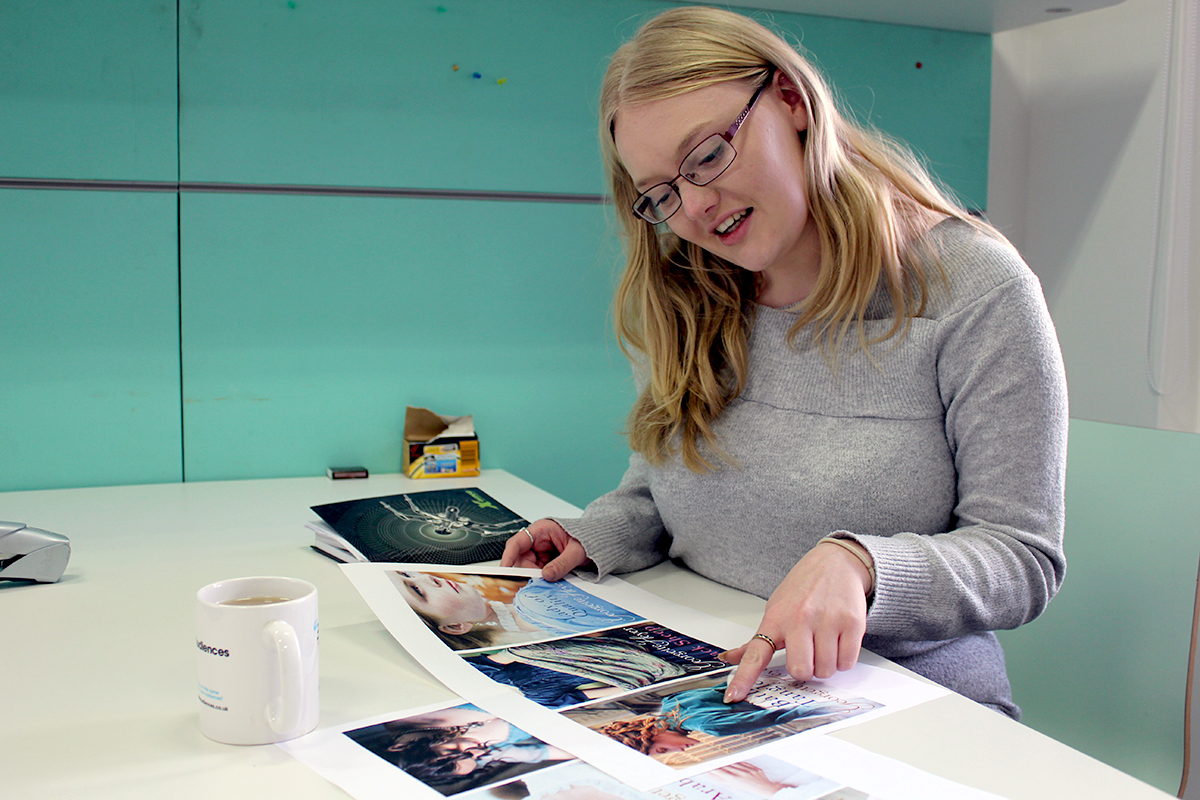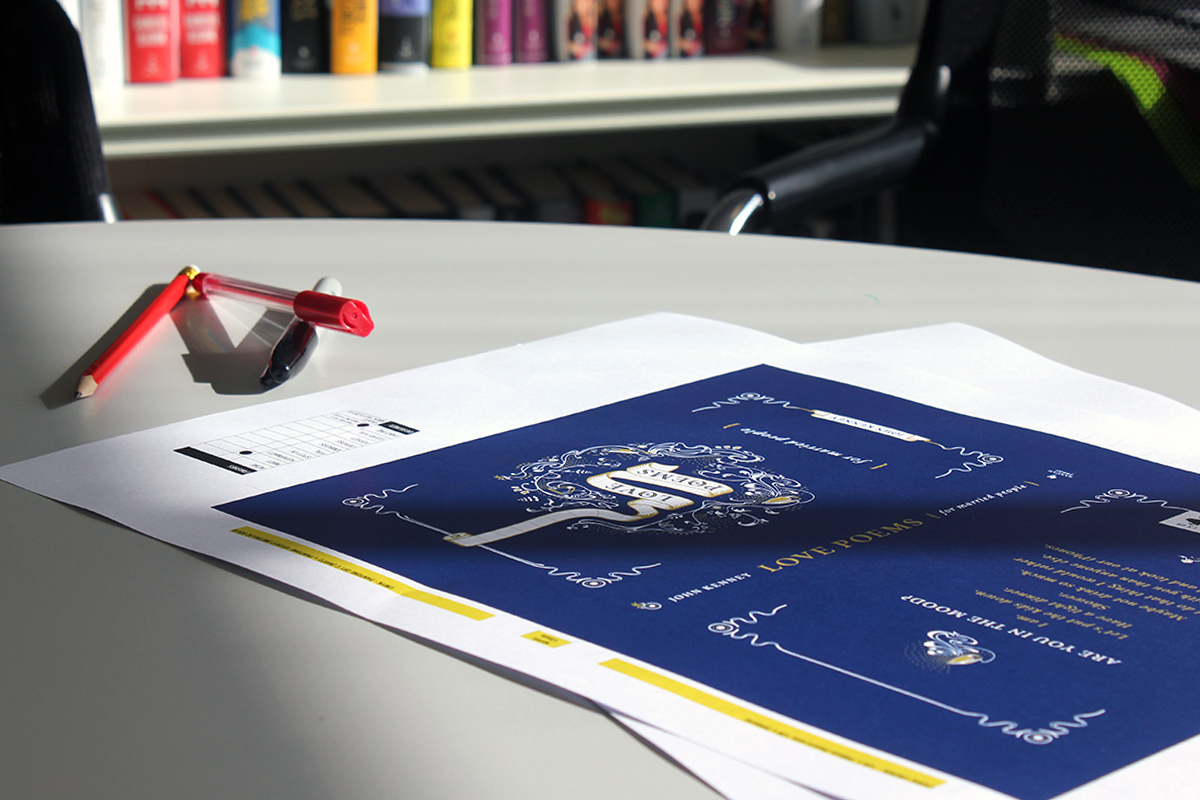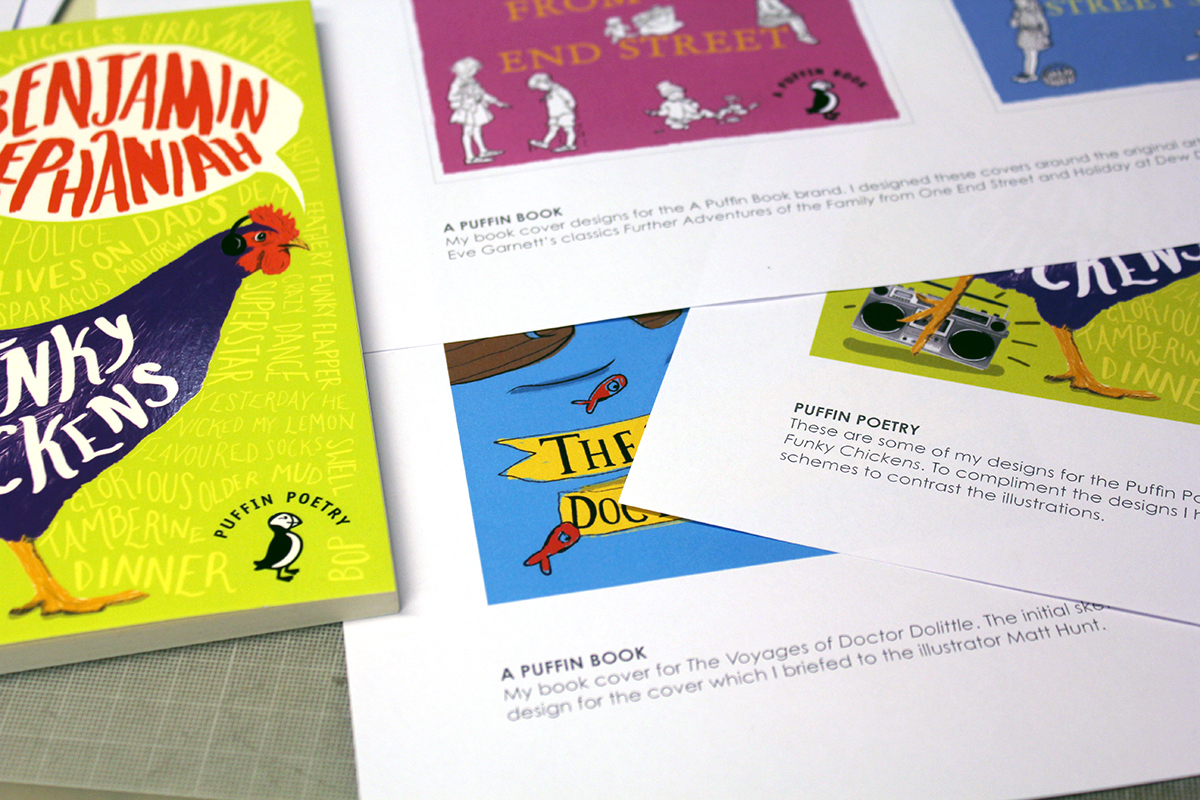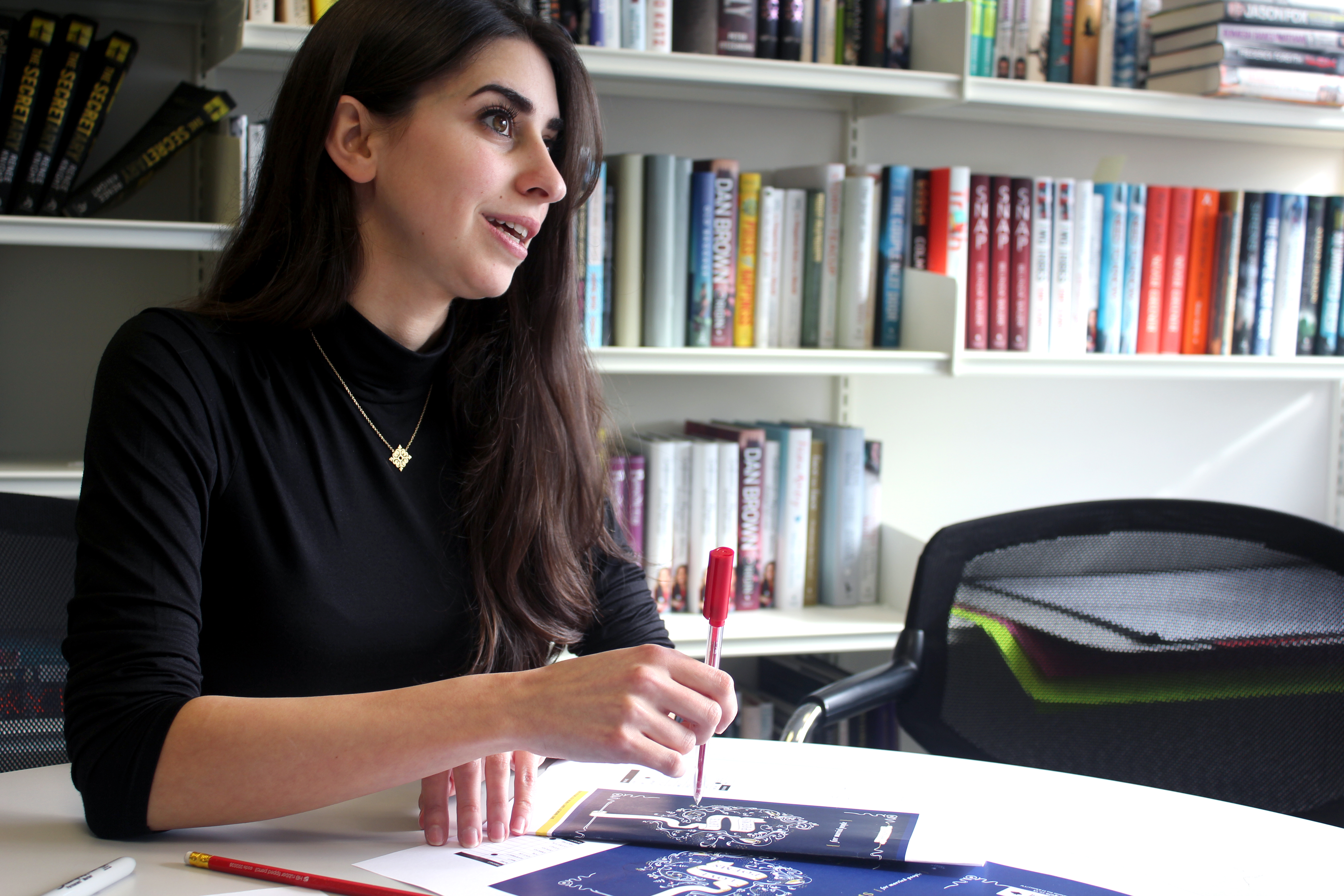- Home |
- Search Results |
- How to become a book designer

You’ve finished your degree and celebrated at your graduation, but what’s next? If you’ve always been interested in book design, Arabella, Sophia, Rose and Erin - all junior designers at Penguin Random House Children’s - share how you can take your first steps into becoming a book designer.
Enter design competitions to expand your portfolio
Transitioning from university can be hard when you’ve been able to work so creatively with wide briefs. Working with a client can still be incredibly creative, but it’s going to be a lot more specific than what you’re used to. Entering competitions can help you practice working with a brief away from the educational mindset you’re used to.
Sophia shares how entering competitions actually helped her decide where she wanted her career to go: ‘I think a big part of the reason why I pursued a career in publishing was because of my participation in competition briefs. They gave me more of an idea of what working in the industry would actually be like, which was really useful to consider, especially as a university student. I found that my work on these briefs also provided great talking points in my job interviews. Coming from an illustration degree I worked mostly with imagery, and the Student Design Award competition in particular gave me the opportunity to experiment with, and consider type in a creative way. This helped a lot when applying for jobs in the publishing industry.’
Find competitions that match your ambition, like a book design brief. They will build out your portfolio when interviewing for jobs, and offer you practice in the field you’re interested in. Arabella is another of our junior designers who entered the Student Design Award: ‘When I was at university we were encouraged to enter as many industry competitions as possible. One of the competitions I entered was the Student Design Award, I loved it! I chose to enter a cover for To Kill a Mockingbird. I read the book and designed a few different covers before deciding which one to enter. Although I didn’t win, I added it to my portfolio to show that I was interested in book design – maybe redesign a cover for one of your favourite books and add it to your portfolio.’

Get yourself a work placement, it's worth all those email asks
The holy internship can feel like a nigh on impossible task to secure, but it is achievable. Erin and Sophia share their advice on how to open doors for yourself.
During the next few months, set aside some time for laying the ground work. Erin shares her experience on how to open conversations with companies: ‘The part that is often a time strain is that you need to search for, and contact companies you are interested in – and keep talking to them. Try to at least send them your online portfolio to show your skillset, it’ll help to differentiate yourself within the sea of undergrads and grads all trying to gain experience. If not a placement, get a meeting in person, so then you’re at least a human to them and not a line of black text on their screen.’
A meeting in person is much more achievable than a placement, and can be useful to ask what someone’s job is like day to day, or request feedback on your portfolio. Remember, it’s flattering for someone to be asked to speak about their role and career, and they’re often very happy to meet for a coffee. This will also show how keen you are to get an understanding of the industry you want to work in, and you can follow up with your contact to ask for any opportunities a few weeks later.
One you gain your placement, don’t be discouraged at how long or short it is. Even simply being in a new environment and meeting people will benefit you. Sophia found her week placement taught her how a design team collaborates: ‘During my third year at university I won a placement at Transworld, which was a part of a prize for the Stratford Literary Festival book jacket competition. My experience there taught me a lot about how a design team collaborates within a company. During my week, I was given a live brief to work on, which I really enjoyed. I also saw how the day-to-day operations ran throughout the team which helped me significantly. Shortly after that placement, I applied for my job as a Design Assistant for Puffin and I felt that I had much more of an understanding of what they would be looking for because of my placement.’
Undertaking a placement can seem like a big commitment, especially if you don’t live in London. Lots of publishers offer support for people looking to gain experience, and are part of initiatives like the Spare Room Project, which offers free accommodation for people who live away from London. At Penguin Random House we pay for any type of work experience or internship.
Books that our junior designers have been working on

Internship not your dream job? Make transferrable skills
Don’t feel pressure to just gain experience at a publisher; anything in the design world will help you on your way into a role. Arabella found it difficult to find anything in her area of interest, but gained transferrable skills instead: ‘It can be hard to gain experience in publishing, but any design placements will help. Over the years I’d done a few weeks at different places – I’d been to design and advertising agencies – but my most useful experience was a week at a print agency. In my interview for my current role, I talked a lot about my week at the printers learning about finishes, and designing for print. Try and think about how you can transfer the experience you’ve gained into new job roles.’
Not all placements are going to be fun, but Erin points out that wherever you work, you can still gain something. ‘I did a placement at a small magazine publishing house for a few months during the summer. In my first couple of weeks I had to put together an information booklet for a racing event that was a lot of number entry, and less design. However, it did give me the insight that sometimes through the tedious and restrictive tasks you can still, and must, find ways to be creative with the platform, even if it’s only a 1-inch square logo mark on each page!’
Making the right connections can be the making of your career. Even if your first job isn’t what you want to do, use that time to gain new skills, and meet the right people. Erin started in fashion, and found her calling through a chance contact: ‘I didn’t really think of book design as an option when I graduated, and worked at a fashion brand for a year before I started at Ladybird. It was when I worked on a book for the brand, which led me to meet with publishers that I thought I wanted to do that more. I had a lot of back and forth with their creative director – making that contact really helped me to have the confidence to go after a role in book design after being in a different industry.’

Practice your interview technique, it's all about research and enthusiasm
If you’ve already done all of the above, congratulations! You’re probably applying for jobs. Be sure to read our tips for building your portfolio, and then get ready for your interview. Arabella says the key is in knowing the current market: ‘Show your passion in interviews. I think it’s important to be well read and know your market.’ Rose adds, ‘Look at which books have been published recently and what the current design trends and story themes are. Really do your research on this and relate the knowledge back to your own designs in the interview.’
Rose says enthusiasm is key: ‘If your portfolio has got you to interview stage, what will make you stand out to secure a design role is showing your passion for books, stories and book design. Talk about designers who inspire you and how they have influenced your practice, as well as specific books that have meant a lot to you. My role is in picture book design and I have always loved them. For my interview I spoke about the illustrators I loved as a child and how they have continued to influence my illustration style.’
We hope we've made you realise that graduating isn’t so scary after all – you’re simply at the beginning of your exciting career. For more insight into life as a book designer, read the blogs below.